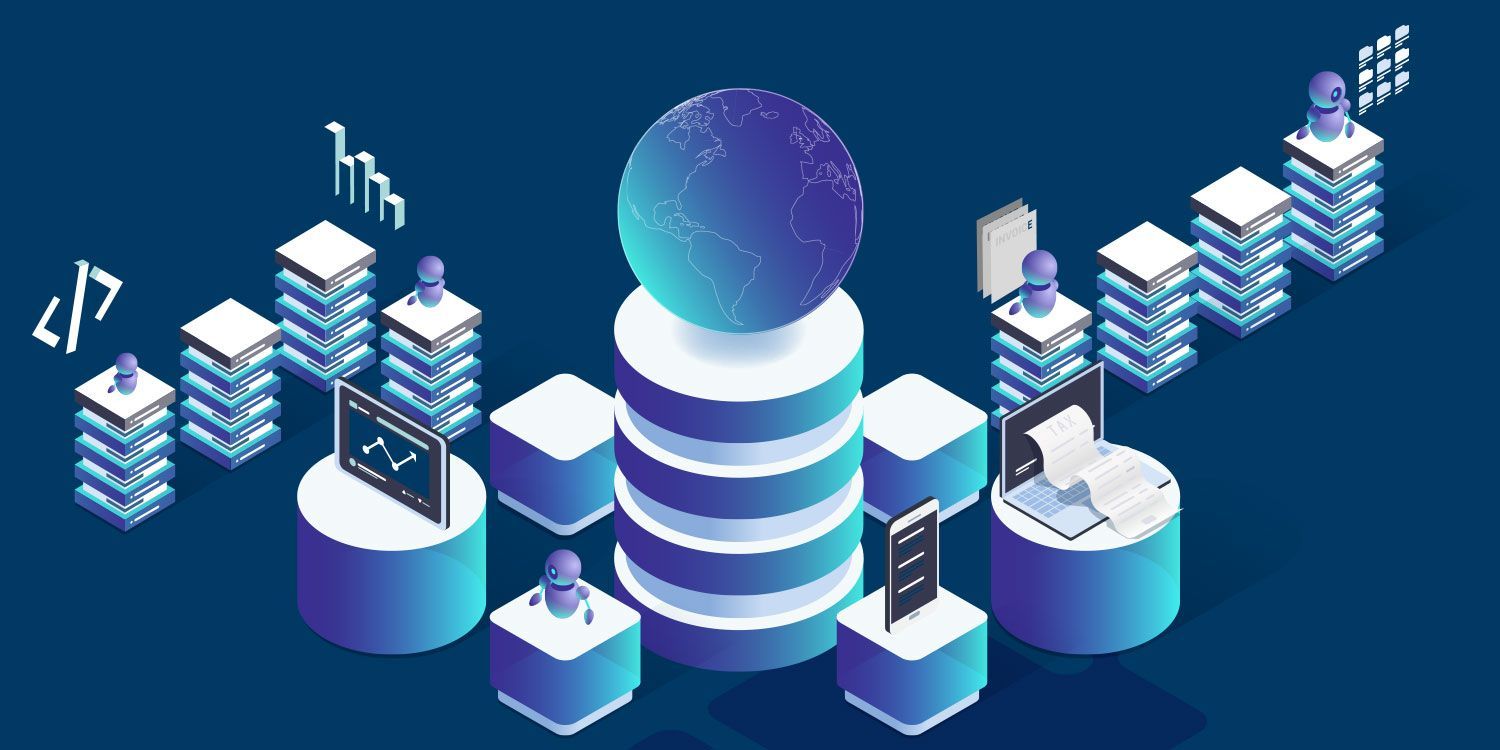As a society in general, we are living through a digital transformation that affects almost every day of our lives. The last 40 years have seen the biggest societal revolution ever and something our ancestors could have never imagined – computers and digital systems are now everyday tools we use for everyday tasks. We don’t often think about it, we just login. From a business perspective, this digital transformation has allowed even small companies to sell all over the world.
This transformation is not new; we are on a path that began from the moment when international relations and technological tools allowed us to reduce physical and geographic distances, with our world now fully accepting disintermediation – that is, the approach to the client in their own country without the need for intermediaries or local structures. Global business is now commonplace, not just reserved for the biggest brands.
Looking closer at the digitisation of business, however, the functions of tax management and regulatory compliance are probably most exposed to (and, to a great extent, receive the most benefits from) this digital transformation – particularly for international companies.
And, due to their role and function, the CFO plays a decisive role in leading the digital transformation process.
Though digital transformations were underway in many countries, the situation caused by the COVID-19 pandemic catalysed administrations and underlined the importance of having a digitised tax system – particularly in relation to internationalisation and cross-border operations. Personalities such as Marcello Estevão, Global Director of Macroeconomics, Trade & Investment at the World Bank, have recently expressed the importance of governments and administrations worldwide to work to generate simple and transparent digital models for all parties.
The OECD are working to harmonise and make the tax function more efficient in the framework of the digital economy, with the reflection of its BEPS plan (aimed at reducing the unstoppable erosion in tax bases) derived from this new paradigm. Currently 139 countries and jurisdictions have joined this framework, focused on the challenges of taxation derived from digitalisation.
In fact, this trend for digitisation has already seen special relevance in everything related to transfer pricing. The intense activity shown by the different regulators at the international level is forcing financial directors and tax departments to automate and harmonise transfer pricing management at the group level, guaranteeing cross-border compliance.

What are tax administrations doing?
Many different countries (with difference economic classifications) have already launched initiatives for taxation and digital transformation. Here are just a handful of examples.
- USA: The country’s tax service (the Internal Revenue Service, or IRS) has an Electronic Federal Tax Payment System (EFTPS) that allows you to schedule payments and access historical information, among other features.
- EU: In April 2021, the European Union announced the launch of new rules on electronic commerce in effect from July, including the development of platforms for the management of tax obligations.
- Costa Rica: The electronic invoice will be produced through the Ministry of Finance, who receives, validates and issues an electronic receipt to the final recipient who can accept or reject it. Taxpayers can also opt for billing providers to automate the generation and sending of vouchers to both the Ministry of Finance and the receiver, who in turn can manage the receipt of invoices made by their suppliers.
- Chile: The use of the LRE (Libro de Remuneraciones Electrónico) began from 15 September, the web portal of the Directorate of Labor. Employers with a minimum of 5 workers must electronically report the information of the remunerations and discounts of their collaborators – a system now completely online and replacing the paper remuneration books. The Internal Revenue Service (SII) has authorised itself to carry this auxiliary book electronically through Resolution Exenta No. 29.
- Colombia is moving forward with the digital transmission of payroll through the platform of the National Tax Administration (DIAN), which immediately reports income, costs, and deductible expenses related to personnel contracts, giving scope to natural and legal persons.
- Peru: As part of its own digital transformation process, from November 2021 the SUNAT (National Superintendence of Customs and Tax Administration) will begin to provide records of sales and income through a new virtual module, provided taxpayers issue and declare electronic payment receipts. The implementation of this automatic registry will ease the preparation of the monthly affidavits, “minimising costs in time and money to taxpayers.”
- Mexico: In 2005, tax digitisation in Mexico began with the digital tax receipt, replacing the formerly used printed invoice. Today, this process has evolved to CFDI version 3.3, which not only includes billing to customers, but also payroll receipts, withholding certificates, and payment supplements, among others. With the Tax Reform of 2014, taxpayers were required to submit federal monthly, informative, and annual tax returns, through the system enabled by the website of the Treasury called “Referenced Payment”. Since then, most of the communications and deliveries of taxpayer information to the Treasury are done electronically. Also in the Tax Reform of 2014 was the obligation to keep the “accounting” in electronic means and in systems authorized by the Tax Treasury in Mexico, including the sending or balance of verification and catalogue of monthly accounts, as well as the policies and auxiliaries in case the authority requires them.
- Ecuador: In December 2020, the Tax Administration of Ecuador began a digital reengineering process with the implementation of Cadastre and Manager of Obligations and Benefits, which affected five essential functions of the Institution: the RUC (Single Taxpayer Registry), Person Maintenance, Global Matrix, Fiscal Vector and Tax Status. This has made it possible to strengthen the integration scheme between the different tax information processes and systems, as well as increasing collection and transparency through voluntary compliance with obligations. The focus of this innovation is:
- Ease of use for internal and external users.
- The automatic integration of taxpayer information in a single repository (both from internal and external sources), which will facilitate management control processes, provide criteria and patterns of compliance with obligations, and the issuance of the tax status of the taxpayer.
- The automatic identification of taxpayers entitled to a tax refund.
- To facilitate the sharing of information with public entities, suppliers, customers and other actors.
- To prepare the available data information for the implementation of Big Data processes.
But innovation doesn’t end here. Tax administrations are also advancing in the use of Big Data and analytics to automate their financial function, grow in efficiency and be able to detect possible breaches or areas of improvement automatically.

As stated by the Inter-American Center of Tax Administrations (CIAT), the United Kingdom has launched the Connect system that facilitates data mining to detect fraudulent activities; Australia is developing ANGIE, which will automatically identify relationships between taxpayers; while the Canadian CRA uses data analysis to combat tax evasion abroad.
But automation in tax matters is also applied within organisations. Auxadi have our own technology that allows us to monitor the obligations of our clients in real time and keep them correctly archived – gaining agility, establishing control processes, avoiding duplication of tasks, and .
“Financial information must flow in an efficient way, but in a way that guarantees the integrity of the data throughout the long and complex process of tax compliance, which culminates with the presentation of the corresponding declarations before the multiple tax administrations to which Multinational Groups have to be accountable. This is not possible without the intensive use of technology – it is key to the whole process.”
Augusto Berutich, Global Director of Tax Services at Auxadi
What is the response of organisations and CFOs?
Organisations, especially through the role played by their CFOs, are already responding to the challenges presented by the digital transformation in financial and, especially, fiscal matters.
New technologies are presenting solutions that a while ago seemed unthinkable. For example, the application of data analytics and machine learning are allowing CFOs to obtain and analyse large amounts of information (both vertically and transversally throughout the organisation), to establish predictions and implement strategic decisions. The implementation of Robotic & Cognitive Automation (R&CA) technologies offers distinct advantages, like process automation, resource scalability, and an improvement in ROI in strategic management. Blockchain technology is simplifying all those processes which, until now, had their basis in trust, such as due diligence or the signing of contracts, among many others.
This situation, and the very context of digital transformation, presents challenges for the CFO, and they should consider:
- Aligning the company with the purpose of digital transformation, to ensure that the digitalisation process is global and coordinated, and not only applied to the tax function.
- Responding to the technological and regulatory compliance needs resulting from operating in an international context, providing a solution to the needs of each country or jurisdiction in which you operate, in a coordinated and homogeneous manner.
- Evolving your role from leader of the finance function to leader of digitalisation, strategic data analysis, or change, among others.
- Ensuring transparency and complete availability of information.
- Ensuring that your organisation is ready to respond to the technological challenges of today, but especially those of tomorrow.
In our hyperconnected world, no one is exempt from the process of change marked by digital transformation. To be sure, it is a revolution of particular impact to finance departments and CFOs, and will continue to impact even further in the future.

Local Knowledge – International Coverage
Founded in 1979, Auxadi is a family-owned business working for multinational corporations, private equity funds and real estate funds. It’s the leading firm in international accounting, tax compliance and payroll services management connecting Europe and the Americas with the rest of the world, offering services in 50 countries. Its client list includes many of the top 100 PERE companies. Headquartered in Madrid, with offices in US and further 22 international subsidiaries, Auxadi serves 1,500+ SPVs across 50 jurisdictions.
All information contained in this publication is up to date on 2021. This content has been prepared for general guidance on matters of interest only, and does not constitute professional advice. You should not act upon the information contained in this chart without obtaining specific professional advice. No representation or warranty (express or implied) is given as to the accuracy or completeness of the information contained in this content, and, to the extent permitted by law, AUXADI does not accept or assume any liability, responsibility or duty of care for any consequences of you or anyone else acting, or refraining to act, in reliance on the information contained in this chart or for any decision based on it.




